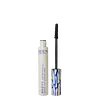What's inside
What's inside
 Key Ingredients
Key Ingredients

No key ingredients
 Benefits
Benefits

 Concerns
Concerns

 Ingredients Side-by-side
Ingredients Side-by-side

Water
Skin ConditioningCopernicia Cerifera Cera
EmollientHydrogenated Sunflower Seed Oil
Skin ConditioningGlyceryl Stearate
EmollientStearic Acid
CleansingStyrene/Acrylates/Ammonium Methacrylate Copolymer
Polyester-5
Helianthus Annuus Seed Oil
EmollientAcacia Senegal Gum
MaskingAminomethyl Propanol
BufferingPolyglyceryl-6 Polyricinoleate
EmulsifyingPhenoxyethanol
PreservativeCaprylyl Glycol
EmollientHydroxyethylcellulose
Emulsion StabilisingButylene Glycol
HumectantSodium Dehydroacetate
PreservativeSodium Lauryl Sulfate
CleansingC11-15 Pareth-7
EmulsifyingAmmonium Hydroxide
BufferingSodium Laureth-12 Sulfate
CleansingPotassium Sorbate
PreservativeDisodium Phosphate
BufferingPolysorbate 60
EmulsifyingSodium Acetate
BufferingSodium Phosphate
BufferingCI 77499
Cosmetic ColorantWater, Copernicia Cerifera Cera, Hydrogenated Sunflower Seed Oil, Glyceryl Stearate, Stearic Acid, Styrene/Acrylates/Ammonium Methacrylate Copolymer, Polyester-5, Helianthus Annuus Seed Oil, Acacia Senegal Gum, Aminomethyl Propanol, Polyglyceryl-6 Polyricinoleate, Phenoxyethanol, Caprylyl Glycol, Hydroxyethylcellulose, Butylene Glycol, Sodium Dehydroacetate, Sodium Lauryl Sulfate, C11-15 Pareth-7, Ammonium Hydroxide, Sodium Laureth-12 Sulfate, Potassium Sorbate, Disodium Phosphate, Polysorbate 60, Sodium Acetate, Sodium Phosphate, CI 77499
Water
Skin ConditioningCopernicia Cerifera Cera
EmollientSynthetic Beeswax
Emulsion StabilisingGlyceryl Stearate
EmollientStearic Acid
CleansingPalmitic Acid
EmollientButylene Glycol
HumectantCera Microcristallina
Emulsion StabilisingVp/Hexadecene Copolymer
Ricinus Communis Seed Oil
MaskingAminomethyl Propanol
BufferingAcacia Senegal Gum
MaskingPhenoxyethanol
PreservativeCaprylyl Glycol
EmollientHydroxyethylcellulose
Emulsion StabilisingSodium Dehydroacetate
PreservativeMyristic Acid
CleansingLauric Acid
CleansingOleic Acid
EmollientLecithin
EmollientTocopherol
AntioxidantAscorbyl Palmitate
AntioxidantCitric Acid
BufferingCI 77499
Cosmetic ColorantWater, Copernicia Cerifera Cera, Synthetic Beeswax, Glyceryl Stearate, Stearic Acid, Palmitic Acid, Butylene Glycol, Cera Microcristallina, Vp/Hexadecene Copolymer, Ricinus Communis Seed Oil, Aminomethyl Propanol, Acacia Senegal Gum, Phenoxyethanol, Caprylyl Glycol, Hydroxyethylcellulose, Sodium Dehydroacetate, Myristic Acid, Lauric Acid, Oleic Acid, Lecithin, Tocopherol, Ascorbyl Palmitate, Citric Acid, CI 77499
Ingredients Explained
These ingredients are found in both products.
Ingredients higher up in an ingredient list are typically present in a larger amount.
Acacia Senegal Gum has skin soothing, thickening, and formulation stabilizing properties. It comes from the Acacia tree that is native to sub-Saharan Africa.
Aminomethyl Propanol is used to adjust the pH of products. It is also used as a base to create other organic compounds. Having a balanced pH is important for protecting your skin.
Aminomethyl propanol is safe to use in cosmetics up to 1%. It is soluble in water.
Butylene Glycol (or BG) is used within cosmetic products for a few different reasons:
Overall, Butylene Glycol is a safe and well-rounded ingredient that works well with other ingredients.
Though this ingredient works well with most skin types, some people with sensitive skin may experience a reaction such as allergic rashes, closed comedones, or itchiness.
Learn more about Butylene GlycolCaprylyl Glycol is a humectant and emollient, meaning it attracts and preserves moisture.
It is a common ingredient in many products, especially those designed to hydrate skin. The primary benefits are retaining moisture, skin softening, and promoting a healthy skin barrier.
Though Caprylyl Glycol is an alcohol derived from fatty acids, it is not the kind that can dry out skin.
This ingredient is also used as a preservative to extend the life of products. It has slight antimicrobial properties.
Learn more about Caprylyl GlycolCi 77499 is also hydrated iron III oxide. It is created from mixing red and black iron oxides. This helps give shades of darkness to a product.
Iron III oxides are classified as inorganic chemicals for coloring.
This ingredient comes from a palm tree native to Brazil. This ingredient is used to thicken texture and leaves behind a film when applied.
Glyceryl Stearate is a mix of glycerin and stearic acid.
It is used to stabilize the mixing of water and oil ingredients. By preventing these ingredients from separating, it can help elongate shelf life. It can also help thicken the product's texture.
As an emollient, it helps soften skin and supports barrier-replenishing ingredients.
In cosmetics, Glyceryl Stearate is often made from vegetable oils or synthetically produced.
This ingredient may not be fungal-acne safe
Fun fact: The human body also creates Glyceryl Stearate naturally.
Learn more about Glyceryl StearateHydroxyethylcellulose is used to improve the texture of products. It is created from a chemical reaction involving ethylene oxide and alkali-cellulose. Cellulose is a sugar found in plant cell walls and help give plants structure.
This ingredient helps stabilize products by preventing ingredients from separating. It can also help thicken the texture of a product.
This ingredient can also be found in pill medicines to help our bodies digest other ingredients.
Learn more about HydroxyethylcellulosePhenoxyethanol is a preservative that has germicide, antimicrobial, and aromatic properties. Studies show that phenoxyethanol can prevent microbial growth. By itself, it has a scent that is similar to that of a rose.
It's often used in formulations along with Caprylyl Glycol to preserve the shelf life of products.
This ingredient is a preservative with antimicrobial properties. It is the sodium salt of dehydroacetic acid.
It is especially effective at preventing bacterial and fungal growth in low concentrations.
Stearic Acid is a fatty acid. It is an emollient, emulsifier, and texture enhancer.
As an emollient, stearic acid helps soften skin. It aids the skin's protective barrier by preventing water loss. It also provides a gentle cleansing effect without stripping away natural oils.
Stearic acid may also be used to enhance the texture of products. It can add volume and stabilize ingredients such as water and oil. This can help water and oil ingredients from separating.
Sources of stearic acid include animal or vegetable fats/oils such as coconut or shea. It can be naturally found in butter, cocoa butter, shea butter, vegetable fats, and animal tallow.
This ingredient may not be Malassezia folliculitis, or fungal-acne safe.
Learn more about Stearic AcidWater. It's the most common cosmetic ingredient of all. You'll usually see it at the top of ingredient lists, meaning that it makes up the largest part of the product.
So why is it so popular? Water most often acts as a solvent - this means that it helps dissolve other ingredients into the formulation.
You'll also recognize water as that liquid we all need to stay alive. If you see this, drink a glass of water. Stay hydrated!
Learn more about Water